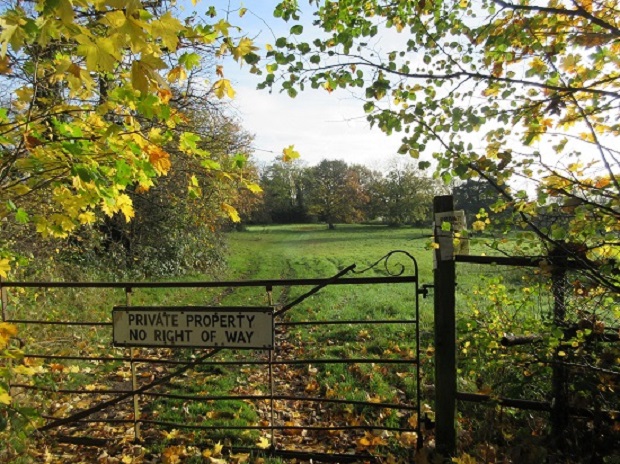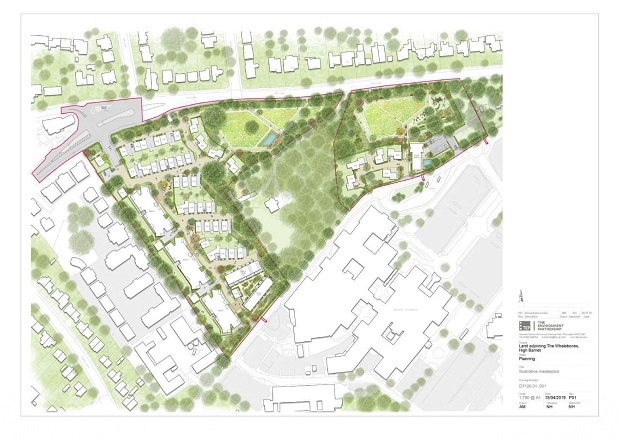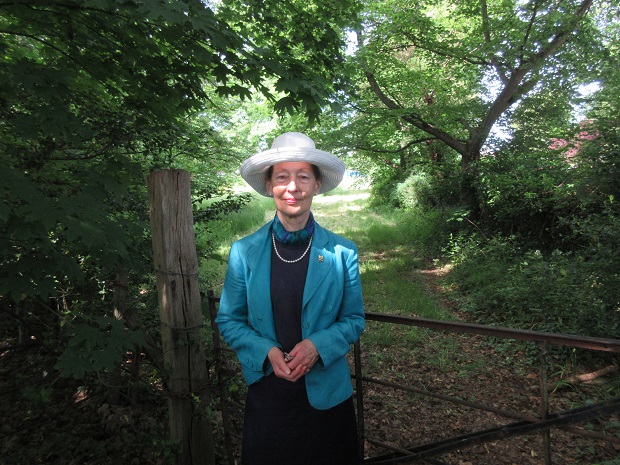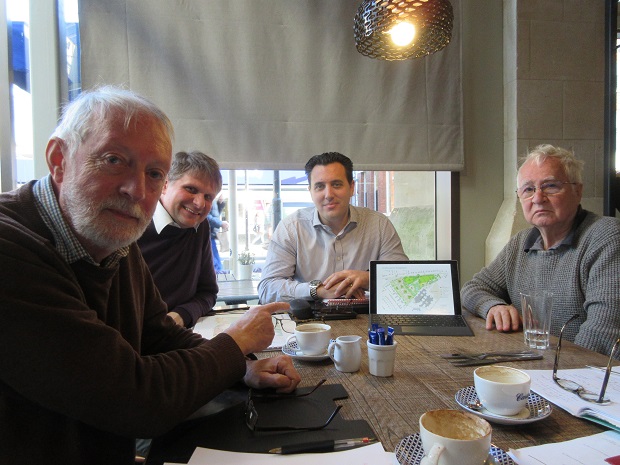Residents dismayed by Barnet Council’s U-turn over plans for housing estate at Whalebones

On the eve of a critical public inquiry, Barnet Council has withdrawn its main objection to plans to build 152 homes on fields and woods in the Whalebones estate, Wood Street, Barnet.
Nearby residents and amenity groups say they are shocked by the sudden U-turn.
They are puzzled as to why the council has unexpectedly abandoned a planning committee decision to reject the application by Hill Residential Ltd.
Letters sent to residents and other objectors say the council has resolved “not to defend” its earlier refusal of the development.

On the casting vote of the chair, the planning committee voted in October 2020 to reject the construction of 152 new homes on the grounds it would mean the loss of open green land and harm an important part of the Wood Street Conservation Area.
By withdrawing its opposition at the planning inquiry – which opens online at 10am on Tuesday 31 August – the Barnet Society will, by default, become the main objector to the scheme proposed by Hill Residential and the trustees of late Gwyneth Cowing.
Over 500 objections were registered with the council, including those of the Chipping Barnet MP Theresa Villiers, and those opposed to the loss of the agricultural holding at Whalebones estate believed their case had been strengthened when the Mayor of London, Sadiq Khan, refrained from giving the scheme his support.
Nearby residents say they are at a loss to understand why they have been abandoned by Barnet Council at such a critical moment.

“Frankly I am dismayed by the council’s tactics,” said Monica Gilbert (above) who lives in Wood Street, close to Whalebones.
“We have all received a letter written in the most confusing language which indicates the council is walking away without objecting, yet we know our MP Theresa Villiers has been objecting to houses on the Whalebones estate for the last five years. What is going?”
Ms Gilbert’s dismay was shared by other nearby residents who said they hope the Barnet Society would stick to its guns and speak up for those campaigning to save the last green space between Barnet and Arkley.
Robin Bishop, who leads for the Barnet Society on planning and environmental issues, is now expecting to become the lead objector at the inquiry.

In its submission to the planning inspector, the society said Whalebones included the last remaining fields near the town centre and was an integral part of the Wood Street Conservation Area. Mr Bishop, seen here far left at a Whalebones consultation meeting in 2018, says the conservation area encapsulates 800 years of Barnet history.
“At one end is its church and original marketplace, chartered in 1199; at the other, open fields. Their juxtaposition is richly symbolic. Barnet’s growth to national status derived chiefly from livestock: herds were driven from across the country to their final pastures on the fringe of the town, then sold at the market. Loss of the remaining last fields would destroy the conservation area’s integrity and amount to lobotomy of our collective memory.”
Since hearing unofficially in mid-July that there was a possibility that the council would no longer be objecting at the planning inquiry, the society had drawn together a group of local experts to consider how best to fight the case.
The council’s letter to objectors gives no reason for the sudden about turn, but it seems to relate to the Barnet local plan which indicates that in January 2020 Whalebones had been zoned as the site for as many as 149 new homes.
To the surprise of the council’s planning department, Hill Residential applied to build 152 homes – sufficient to attract potential support from the Mayor of London – and it seems the planners were outmanoeuvred by the strength of local opposition.
When Hill’s application was considered by the planning committee, the decision was tied by a five-five vote and the application was only rejected on the casting vote of the then committee chairman, Councillor Shimon Ryde.
Objectors were encouraged still further when in March 2021 the Mayor of London refrained from intervening, saying he would respect the planning committee’s decision.
When Hill appealed to the planning inspector, a concerted effort was made to ensure objections were filed by the closing date in June to illustrate the depth and extent of local anger over the loss of the last remaining fields and woods.
Ms Villiers encouraged residents to join her in trying to ensure the Whalebones farmland was “saved for future generations” as an irreplaceable green space.
Despite the withdrawal of its main objection, Barnet Council says it is still insisting Hill Residential meets the necessary planning obligations to ensure an acceptable development of the site.
9 thoughts on “Residents dismayed by Barnet Council’s U-turn over plans for housing estate at Whalebones”
Comments are closed.


Agree entirely with the comments here. On balance it’s an excellent candidate for the type of sensitive housing development being proposed.
Also interesting to learn that the Barnet Residents Association hold a similar view as that certainly is the general opinion of people I speak to from the the area.
The Barnet Society has never been opposed to some appropriate development on the Whalebones site. Since 2015 we have offered constructive suggestions, which you can find in our website news archive and Our Work page.
The significant majority of public opinion will be shown to be in favour of rejecting this appeal. However I appreciate people new to the area or who are longer term residents but have never noticed this green open space may place little value on it. I just think they have described themselves as the people least likely to take the opposite view.
Some longer standing residents, even those with past access through community groups, may also support the project for one reason or another but seldom more than one, ie they want a new artists’s studio or they prioritise new homes over almost anything else. This must all be respected but it will be a minority of the views expressed.
My view is long term. The original development on the other field now redeveloped again as Elmbank was presented as definitively the last on the site and the best way to preserve the rest of it. We now have a new project taking a similar proportion of what is left.
Privately owned land leased for public access will not survive as that. It is merely a land bank for future development, as all the land held in trust has been seen for at least the last decade.
This is now all academic for everyone except the Inspector at the Public Inquiry starting tomorrow. I wait to see just how many participants and witnesses the long lobbying for this project will have pointed at proceedings. I also wait to see how the Inspector will view some of the events that have got us to this point.
this is hardly precious green space and woodland, it’s a privately owned field (with no public access) sandwiched between a busy road and hospital car park.
this kind of response just sounds like knee jerk nimby nonsense
London has a housing crisis, if we really want to protect the greenbelt then we have to stop automatically objecting to everything, otherwise political pressure from younger, priced out generations will eventually become too strong – you can already start to see this when the mayor pushes developments through.
This is not accurate. I and my family regularly use the excellent green spaces in and around Barnet and their local value is abundantly clear. I would have no hesitation defending these. This area – regrettably not so much. I say again how is benefitting the local community? Because this is in no way clear and the proposal at least appears to include opening it up. Good things in my in my opinion and your reply certainly hasn’t offered anything that would genuinely counter that position.
Feel stabbed in the back by Barnet Council despicable decision by them . Hopefully we will continue the fight to stop this destruction of our precious green space and woodlands.
I agree with the first poster, this isn’t public green space that’s used by the local community it’s private land that isn’t accessible to the general public.
I live very close to this and am certainly not ‘dismayed’. It seems like another classic case of local nimbyism
It’s the perfect place for housing, it’s not in the green belt and it’s a 20 min walk from the tube. A field sandwiched between a busy road and the busy hospital is hardly the lake district.
If you’re insistent on no building in the green belt then you can’t really complain that perfect places for much needed housing such as this are used.
If using or seeing green space are your criteria for development, much of the Green Belt and most of our Sites of Natural or Scientific Interest could be built over. If we care about our natural environment and our history, we need higher standards than that.
My issue with all this is that I have lived in the area for over 5 years and have never used or even seen this space. It is not clear to me what it is for and it certainly isn’t obvious to more recent residents what the purpose is or even if it is a “public space”. So as far as I and many others are concerned if it is developed in the manner suggested it will actually add more benefit to the community. If it is not going to be developed it should be “marketed” much more to residents to highlight the purpose and benefits it brings to the area.